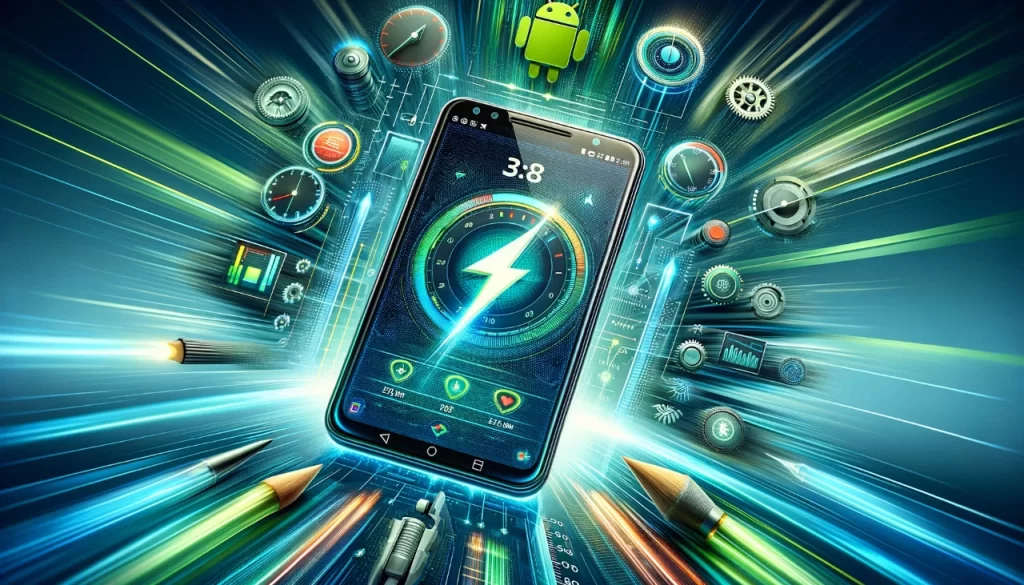Android phones will inevitably lose some of their speed over time. But there are things you can do monthly to keep them running fast. There are caches you can remove, settings you can arrange to boost performance. Do that, and you will speed up your phone.
Excluding background use can also speed up your device, especially on tablets and smartphones that are charged at rates tied to data plans.
Update System Apps
Your Android phone and tablet will slow down after some period of use due to several reasons such as build up of data, unwanted apps, application settings and many more, but there are quick and proven solutions to restore it back to a fast device once again. If you want to improve your smartphone moving forward, the first step is to keep those system apps updated. Not only will this fix bugs and improve performance, you’ll also stay atop some of the hottest new features. Furthermore, you will find information on which apps, such as the bootloader routines and the firmware of the 4G/Wi-Fi radio chips, are considered low level, and which can be updated by a manufacturer – this needs to be installed to provide a future update – and so is something you don’t want to miss, although you might experience a temporary drop in performance, before the update is installed. Lastly, you want to avoid apps that excessively drain your battery, or use up too many system resources. To identify them is easy: keep an eye on system consumption, but also keep background activity to a minimum, or use lighter versions of popular apps. Some of your favourite apps will consume a lot of storage, but some smaller, feature-lite versions might be appropriate for your slower device.
Free Up Storage Space
Slow phones eat into productivity and consumer enjoyment of using a device. Fortunately there’s plenty you can do to optimise your Android device to get the best from it in terms of speedier performance. Slowly operating Android devices are often caused by redundant free storage. Uninstalled Applications taking up storage and potentially resources in the background. Make sure to review all of your installed Applications to uninstall any you no longer need and delete any Applications you no longer need in your phones memory. A very simple way to boost Android performance and improve battery life is to clear app cache regularly. Apps will often store lots of background data to make reopening faster but this can lead to device performance issues, particularly if you have only a small amount of storage. Clearing app cache regularly will prevent large residual files from building up over time – and improve your battery life!
Remove Unnecessary Apps
Having too many apps installed and running in the background will drag down the performance of an Android device, especially an older phone which may not have the guts to handle as many background apps as a newer phone. Getting rid of some of the apps that you rarely use can improve the performance by giving you some room in your storage space. Aside from cleaning in that way, you can also gain speed and save battery life, or even free up a bit more storage space on your iPhone, iPod or iPad by uninstalling preloaded apps that you don’t need. Old or unused applications can take up valuable storage space while idling in memory, tying up system resources – so periodically audit and delete, as appropriate, any application that you no longer need. Data-heavy applications may similarly impact negatively on Android performance – to alleviate this burden, restricting an application to Wi-Fi only might help it to better withstand access to cellular data services (this is particularly important in a number of emerging markets of high cellular load such as 2G/3G networks or pay-by-the-byte plans).
Manage Background Processes
This feature includes affiliate links from our partner site, Android Authority which may result in us earning a commission. Traditionally, older Android devices will slow down as they age and newer software features begin to strain older hardware. If you’re unlucky, an Android device might be slow with new software updates soon after you use it. Cleaning up apps and reducing background processes and more could work to speed up an Android. One of biggest causes to take down the performance on Android is the storage. Your apps may retain some information that can bring about the issue of their operation and performance. If you need some free space, you can uninstall unnecessary apps; or simply move media resource files in immediate direction to the external memory space: It is allowed to transfer media resource files from internal memory space to memory card space. Perform some tweaks for your phone to accelerate the operation: Conduct some settings for your phone. For example, set the restrictions for this phone’s function in background; alter its phone’s animation setting in detail; set all types of live wallpapers in this phone to static pictures to reduce your phone’s resource consumption. Set slow-motion animation to save the resources. Set low-frame-rate screen refresh to facilitate your operation. Turn off the auto-brightness and auto-rotate screen functions.Shut down the background running apps on your phone if you have no use: Shut down some auto-sync functions on those apps which are seldom used. If the Auto-Sync function of this phone is turned on, you can set developer options to further improve it.






More Stories
Taking Back Your Digital Life: A Guide to Privacy-Focused Android Custom ROMs
Android Gaming Performance Tweaks for Mid-Range Phones
The Evolution of Android: From Cupcake to 2025 and Beyond